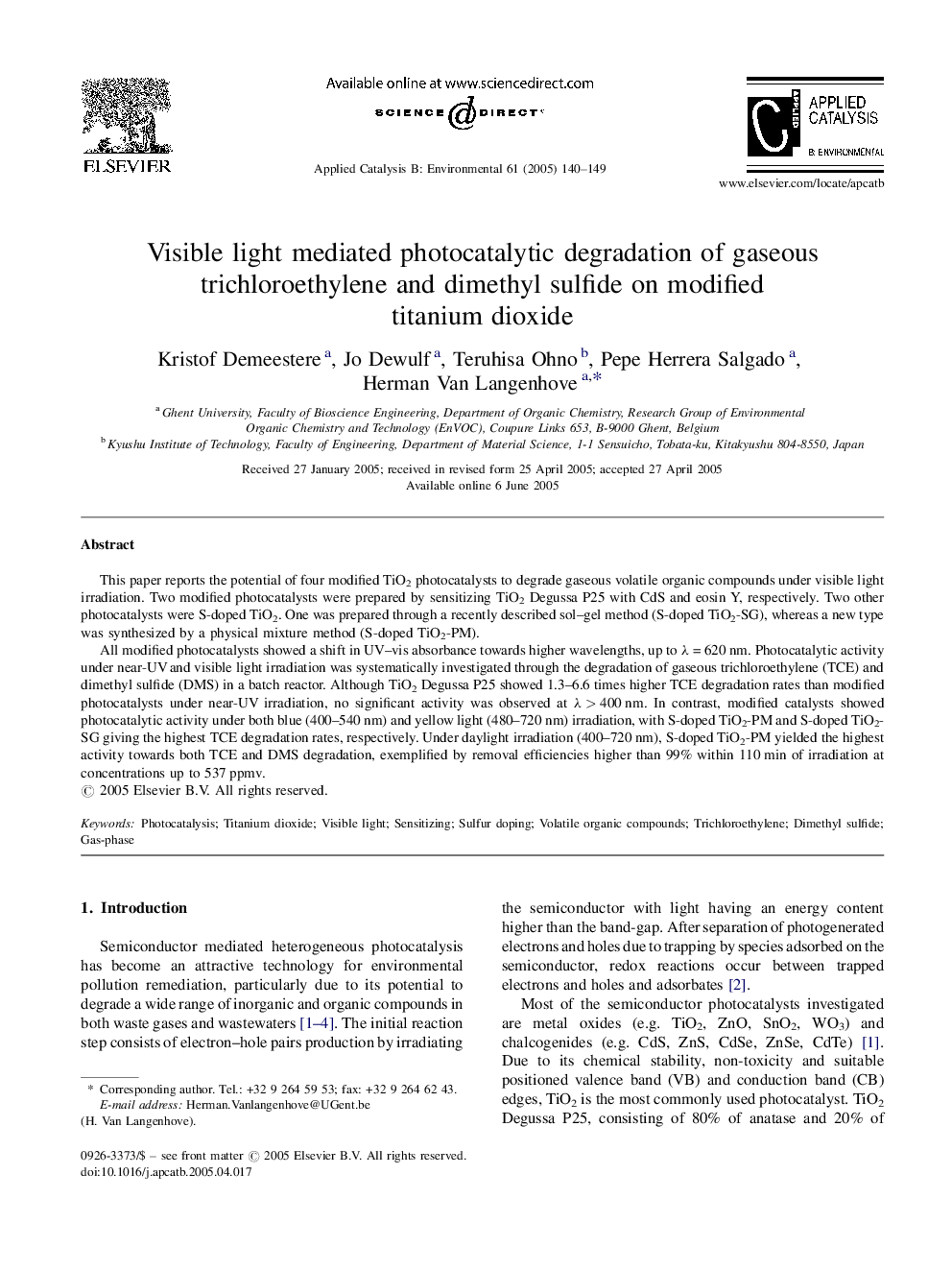| Article ID | Journal | Published Year | Pages | File Type |
|---|---|---|---|---|
| 9609789 | Applied Catalysis B: Environmental | 2005 | 10 Pages |
Abstract
All modified photocatalysts showed a shift in UV-vis absorbance towards higher wavelengths, up to λ = 620 nm. Photocatalytic activity under near-UV and visible light irradiation was systematically investigated through the degradation of gaseous trichloroethylene (TCE) and dimethyl sulfide (DMS) in a batch reactor. Although TiO2 Degussa P25 showed 1.3-6.6 times higher TCE degradation rates than modified photocatalysts under near-UV irradiation, no significant activity was observed at λ > 400 nm. In contrast, modified catalysts showed photocatalytic activity under both blue (400-540 nm) and yellow light (480-720 nm) irradiation, with S-doped TiO2-PM and S-doped TiO2-SG giving the highest TCE degradation rates, respectively. Under daylight irradiation (400-720 nm), S-doped TiO2-PM yielded the highest activity towards both TCE and DMS degradation, exemplified by removal efficiencies higher than 99% within 110 min of irradiation at concentrations up to 537 ppmv.
Keywords
Related Topics
Physical Sciences and Engineering
Chemical Engineering
Catalysis
Authors
Kristof Demeestere, Jo Dewulf, Teruhisa Ohno, Pepe Herrera Salgado, Herman Van Langenhove,
